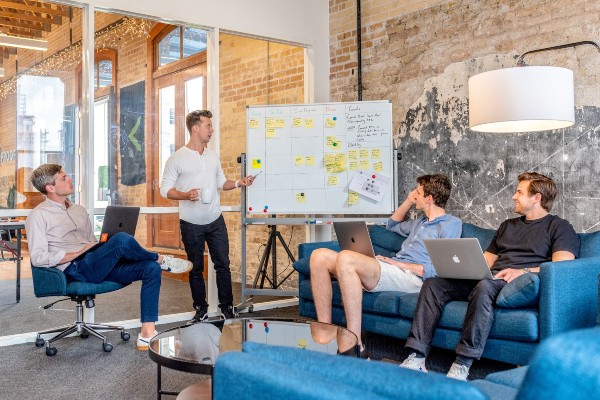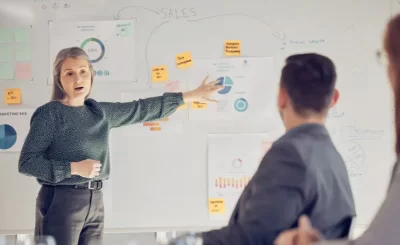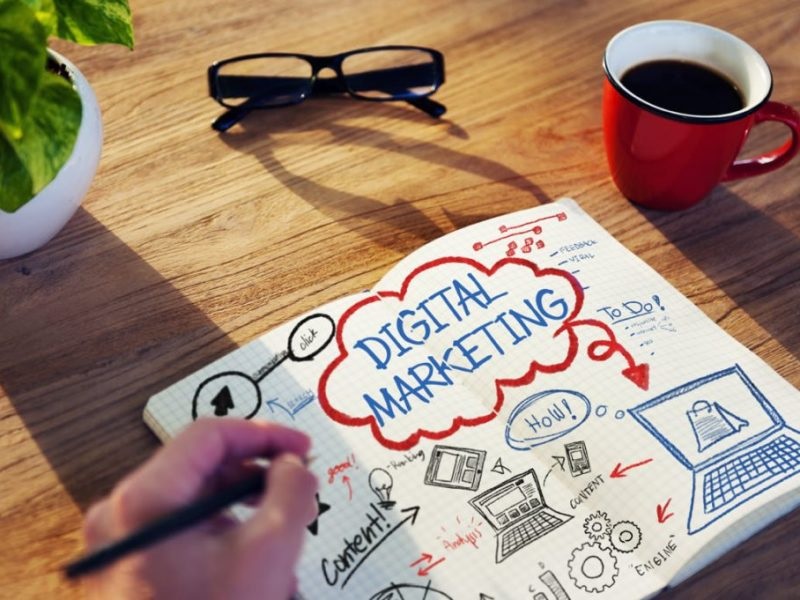Understanding the Intersection of Behavioral Economics and Sales Funnels
In today’s competitive market, businesses are constantly looking for innovative ways to enhance their sales funnels. One powerful tool at their disposal is behavioral economics – a field that combines psychology and economics to understand how people make decisions. By leveraging insights from this field, businesses can influence consumer behavior and supercharge their sales funnels.
The Basics of Behavioral Economics
Behavioral economics explores how psychological factors, such as emotions and biases, impact the choices individuals make. Unlike traditional economics, which assumes people act rationally, behavioral economics acknowledges that human decision-making is often irrational and influenced by various biases.
- Heuristics: These are mental shortcuts that help people make quick decisions, often leading to predictable patterns.
- Biases: Cognitive biases, like confirmation bias or anchoring bias, impact how consumers perceive value and make purchasing decisions.
Why Behavioral Economics Matters for Your Sales Funnel
Your sales funnel is essentially a path that guides potential customers from awareness to purchase. Understanding how consumers think, feel, and decide helps you design a funnel that resonates with their emotional and cognitive processes. By applying principles of behavioral economics, businesses can align their sales strategies with how customers naturally behave, making it easier to convert leads into sales.
The Psychology Behind Consumer Behavior

To optimize your sales funnel, it’s essential to understand the psychological triggers that influence consumer behavior. From biases to emotional responses, these factors play a huge role in the decision-making process.
Cognitive Biases That Impact Buying Decisions
- Loss Aversion: People tend to prefer avoiding losses rather than acquiring equivalent gains. By framing offers in terms of what customers will lose if they don’t act (rather than what they gain), businesses can create urgency.
- Anchoring: Consumers rely heavily on the first piece of information they receive. If a product is initially presented as high-priced and then discounted, customers perceive it as a better deal.
- Social Proof: Humans are social creatures, and they tend to follow the actions of others. Testimonials, reviews, and user-generated content play a pivotal role in convincing potential buyers.
The Role of Emotion in Decision Making
While traditional marketing focuses on rational decision-making, behavioral economics highlights the importance of emotions in purchasing decisions. Consumers are often driven by feelings of fear, desire, or excitement, even when making large investments. By triggering emotional responses, businesses can create a stronger connection and improve conversion rates.
- Fear of Missing Out (FOMO): Creating a sense of urgency or exclusivity taps into this powerful emotion, prompting customers to act quickly.
Behavioral Triggers to Optimize Your Sales Funnel
Now that we understand the psychological factors at play, let’s dive into actionable behavioral triggers that can be used to optimize each stage of your sales funnel.
Creating Scarcity and Urgency
- Limited-time Offers: People are more likely to purchase when they feel they might miss out. Limited-time offers or flash sales activate the scarcity principle.
- Low-stock Indicators: Displaying real-time stock levels can push customers toward quicker decision-making.
Using Reciprocity to Increase Customer Loyalty
- Free Samples or Gifts: The principle of reciprocity suggests that when you give something for free, customers feel obligated to reciprocate. Offering a freebie in exchange for email sign-ups or an initial purchase can boost conversions.
- Exclusive Access: Offering exclusive content or early access to new products fosters a sense of value and loyalty among customers.
Framing Offers to Maximize Conversion
- Loss vs. Gain Framing: People are more motivated by potential losses than gains. For example, framing a discount as “Don’t miss out on saving $20!” rather than “Save $20 now!” can be more effective.
- Tiered Pricing: Offering three pricing options, with the middle one being the most attractive, can nudge consumers to choose the desired option.
Nudging: Subtle Behavioral Techniques to Guide Consumer Action
Nudging is the practice of subtly guiding consumer behavior without limiting their options. In a sales funnel, nudges can steer potential buyers toward the desired action, such as completing a purchase.
What is a Nudge in Behavioral Economics?
A nudge works by altering the environment in which people make decisions. It doesn’t take away choice but makes certain options more likely by tapping into consumers’ cognitive biases. For example, making a default option more attractive or more convenient can encourage people to act without even realizing it.
Nudging in Action: How to Implement It in Your Sales Funnel
- Default Choices: Pre-selecting an option for the consumer, like adding an upsell to their cart, can increase the likelihood of a purchase.
- Opt-out Subscriptions: Rather than asking customers to opt-in, make subscriptions or services an automatic addition with the option to opt-out. This method often results in higher retention rates.
- Timing of Options: Presenting offers at the right time, such as showing a discount at checkout, can lead to a higher rate of conversion.
Optimizing the Customer Journey: Applying Behavioral Insights at Every Funnel Stage
Behavioral economics can be applied throughout the entire sales funnel, from awareness to conversion. Here’s how to optimize each stage with insights from behavioral psychology.
Top of the Funnel (Awareness Stage)
- Leveraging Cognitive Biases: Use simple, eye-catching visuals or headlines that appeal to heuristics (e.g., familiarity or recognition).
- Social Proof in Ads: Showing positive reviews or user-generated content in ads builds credibility and encourages engagement.
Middle of the Funnel (Consideration Stage)
- Comparative Content: Providing comparison guides or benefits breakdowns taps into consumers’ need for clarity, helping them make better-informed decisions.
- Trust-Building Techniques: Use testimonials, case studies, and money-back guarantees to reassure potential customers.
Bottom of the Funnel (Conversion Stage)
- Urgency and Scarcity: Using countdown timers or indicating that an item is in low stock can push the customer toward a quick decision.
- Irresistible Offers: Present a final compelling offer, such as free shipping or a bonus product, to seal the deal.
Personalization and Customization in Behavioral Economics
One of the most effective ways to use behavioral economics is by personalizing the sales experience. Tailoring your offerings based on customer data and behavior can increase engagement and conversions.
The Power of Personalization
Personalized experiences create a stronger connection between the customer and the brand. For instance, using a customer’s name in an email or recommending products based on past purchases can foster trust and increase sales.
Customizing Offers Based on Consumer Behavior
- Dynamic Pricing: Offer tailored discounts or pricing based on consumer behavior, such as location or time of day.
- Behavioral Segmentation: Segment your customers based on how they behave on your site, creating specific offers for high-intent users.
The Role of Trust and Credibility in Behavioral Economics
Trust is essential for making sales. When customers trust a business, they are more likely to make a purchase and become repeat buyers.
Trust-Building Process
- Visible Trust Signals: Include trust badges, security seals, and third-party endorsements in your sales funnel to reassure customers.
- Reducing Cognitive Dissonance: After a purchase decision, make sure the customer feels confident by reinforcing the benefits and providing post-purchase reassurance.
A/B Testing and Experimentation with Behavioral Insights
To fully harness the power of behavioral economics, businesses should regularly test and experiment with different strategies.
The Importance of Testing
Testing different behavioral triggers helps identify what works best. For instance, A/B testing urgency messages, social proof, or pricing can help fine-tune the sales funnel.
Running Behavioral Experiments
- Test different types of scarcity messages, like “only 2 left” vs. “limited time only.”
- Experiment with varying the amount of social proof, such as showing the number of items sold or reviews.
Measuring and Scaling Behavioral Economics Strategies in Your Sales Funnel
Once you’ve implemented behavioral insights, it’s essential to track and measure their success.
Key Metrics
- Click-through rates, conversion rates, and bounce rates are crucial indicators of funnel performance.
- Behavioral indicators such as time spent on page or cart abandonment rates can provide further insights into the effectiveness of behavioral triggers.
Scaling Strategies
Apply successful tactics from one stage of the funnel to others. For instance, if a scarcity tactic works well in the conversion stage, try incorporating it into the consideration phase.
Challenges and Ethical Considerations in Behavioral Economics for Sales
While behavioral economics can be highly effective, businesses must navigate ethical concerns.
Balancing Persuasion and Consumer Autonomy
Ensure that your sales funnel doesn’t manipulate or deceive customers. Always be transparent about the use of psychological techniques.
Avoiding Overuse of Behavioral Cues
Too many nudges and triggers can overwhelm the consumer. It’s essential to strike the right balance and provide a pleasant, respectful customer experience.
Conclusion: Making Behavioral Economics a Core Part of Your Sales Funnel Strategy
Incorporating behavioral economics into your sales funnel can significantly boost conversions and customer satisfaction. By understanding the psychological triggers behind consumer behavior and applying them at each stage of the funnel, businesses can create more effective, persuasive sales processes. Moving forward, continuing to test, iterate, and scale these strategies will ensure long-term success.








